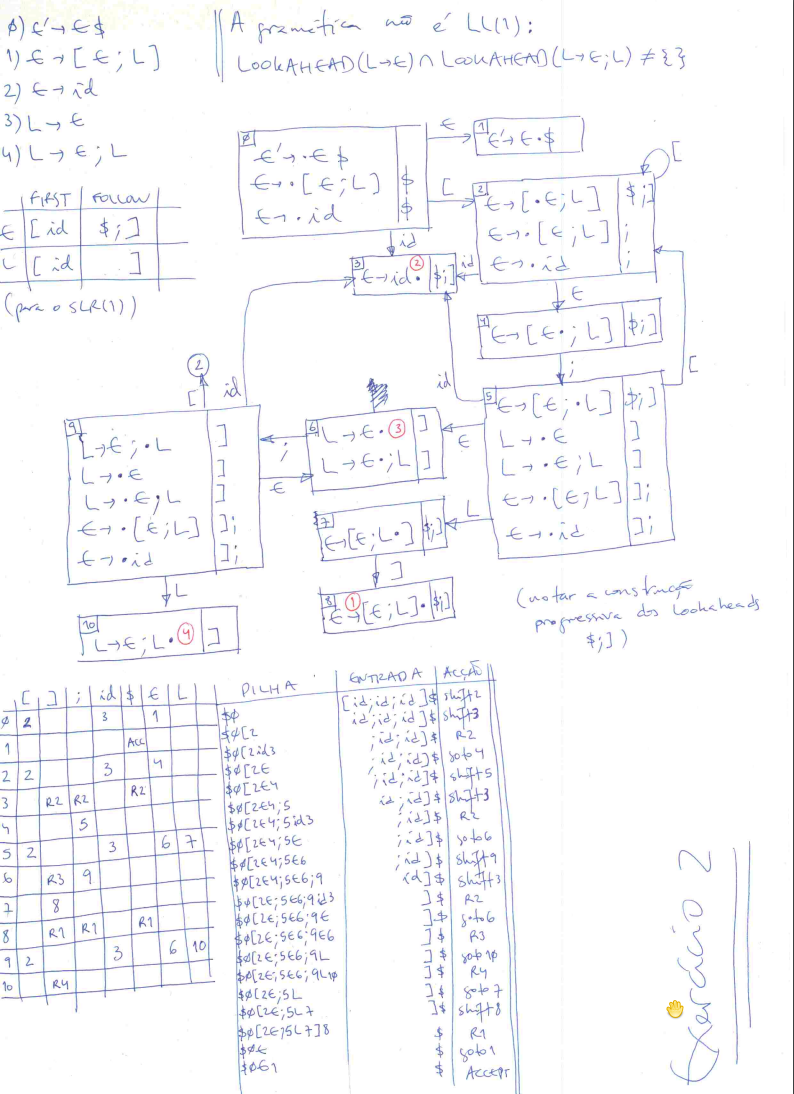Difference between revisions of "Bottom-Up Parsing/Exercise 9: LALR(1)"
From Wiki**3
< Bottom-Up Parsing
(→Solução) |
|||
| Line 2: | Line 2: | ||
Consider the following grammar, where E is the initial symbol and { [, ], ;, id } is the set of terminal symbols: | Consider the following grammar, where E is the initial symbol and { [, ], ;, id } is the set of terminal symbols: | ||
| − | <text> | + | <source lang="text"> |
E -> [ E ; L ] | id | E -> [ E ; L ] | id | ||
L -> E | E ; L | L -> E | E ; L | ||
| − | </ | + | </source> |
# Compute the set of LALR(1) states for the grammar. Build the corresponding LALR(1) parse table. | # Compute the set of LALR(1) states for the grammar. Build the corresponding LALR(1) parse table. | ||
# Show the parsing process for input '''[id;id;id]''' (including the actions/gotos and the input and stack states). In case of conflict, assume YACC's behavior. | # Show the parsing process for input '''[id;id;id]''' (including the actions/gotos and the input and stack states). In case of conflict, assume YACC's behavior. | ||
Revision as of 13:26, 12 February 2019
Problema
Consider the following grammar, where E is the initial symbol and { [, ], ;, id } is the set of terminal symbols:
E -> [ E ; L ] | id
L -> E | E ; L
- Compute the set of LALR(1) states for the grammar. Build the corresponding LALR(1) parse table.
- Show the parsing process for input [id;id;id] (including the actions/gotos and the input and stack states). In case of conflict, assume YACC's behavior.
- Is this an LL(1) grammar? Why?
Solução
| Solução completa |
|---|
